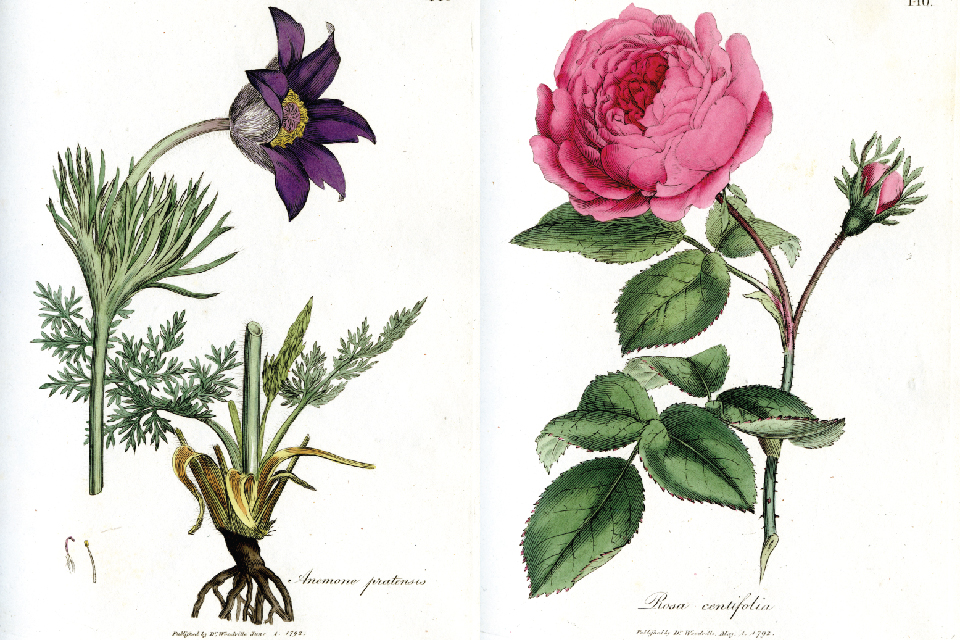Library Exhibit Highlights Botanical Medicine’s Ties to Pharmacy
Written By: Tara Wink, Historical Collections Librarian and Archivist
In August, UMB’s Health Sciences and Human Services Library (HSHSL) installed Botanical Medicine: Highlights from the HSHSL Pharmacy Historical Collection in its Weise Gallery. The exhibit features a selection of large reprints from William Woodville’s Medical Botany, a four-volume set published between 1790 and 1794 by the Royal Colleges of Physicians of London and Edinburgh. Botanical Medicine will remain in the Weise Gallery through November.
The art of botanical illustration is a practice that goes back millennia − to the first century B.C.E., when the Greek physician and botanist Crateuas described and illustrated a series of medicinal plants. From that time until the advent of modern photography, detailed plant illustrations, known as botanicals, were invaluable tools for identifying and classifying plants with medicinal or therapeutic properties. Botanical illustration played an important role in the development of scientific knowledge over the centuries, as physicians and pharmacists copied, shared, and studied these illustrations.
Woodville’s valuable set includes 300 illustrations drawn from plant specimens by James Sowerby (1757-1822), an English naturalist, illustrator, and mineralogist. The work’s author, William Woodville (1752-1805), was an English physician and botanist. Woodville sought to teach medical practitioners, including pharmacists, about plants and their medicinal benefits. According to Iain Milne, librarian at the Royal College of Physicians of Edinburgh, “Medical Botany was the standard illustrated work on the British pharmacopoeia for most of the nineteenth century.” The volumes are part of the HSHSL’s Historical Collections, located on the fifth floor.
The HSHSL’s Pharmacy Historical Collection contains more than 1,100 volumes dating from the 17th century. The majority of these volumes were donated to UMB by August Kach, Maryland College of Pharmacy Class of 1882. The collection contains influential and rare pharmacy texts, pharmacopoeias from around the globe, and beautiful hand-colored botanicals. As stated above, botanical medicine has existed in some form or another for millennia and is present in all cultures the world over. The study of botanicals provides an understanding of different cultures approaches to medicine. While the volumes in historical collections were at one time heavily studied and even required for coursework, today they provide a vital glimpse into early pharmaceutical education as well as UMB campus’ history.
For more information on the Woodville volumes, Pharmacy Collection, or Historical Collections, or to make an appointment to view the collections, contact Tara Wink at twink@hshsl.umaryland.edu.

